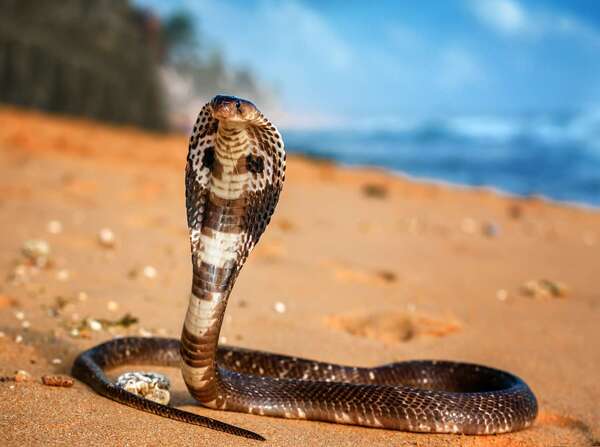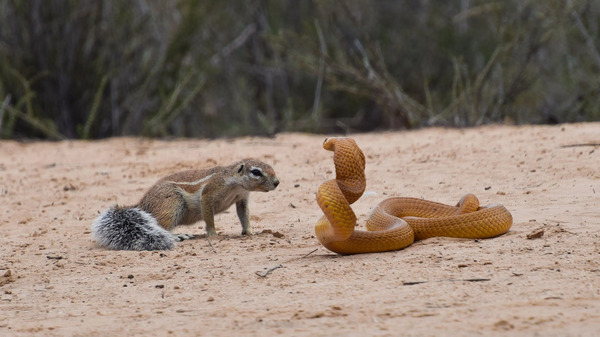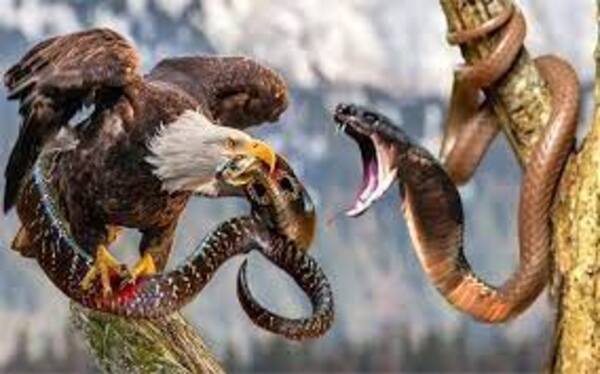Cobras are some of the most fascinating and feared snakes in the animal kingdom. Known for their striking appearance and potent venom, they are often at the top of the food chain. However, they are not invincible and have a few natural predators. In this article, we’ll explore what animals eat cobras and how these interactions shape the ecosystem.

Cobras belong to the family Elapidae and are famous for their ability to "hood" when threatened. They are found in various habitats, including forests, grasslands, and deserts across Africa and Asia. While cobras are skilled hunters, feeding mainly on small mammals, birds, and other reptiles, they themselves can fall prey to certain animals.

Mongooses are perhaps the most famous predators of cobras. These small mammals are known for their agility and remarkable speed. They have a natural resistance to snake venom, allowing them to engage in combat with cobras. Mongooses often hunt alone or in small groups and are known to provoke cobras to strike before swiftly attacking.

Large birds of prey, such as eagles, are also known to prey on cobras. With their keen eyesight, eagles can spot a snake from great heights. They swoop down with incredible speed, using their sharp talons to capture and kill the cobra before carrying it off to their nest.

Some species of owls, particularly larger ones, will hunt snakes, including cobras, at night. Their silent flight and excellent night vision give them an advantage when hunting in the dark. Owls can easily overpower a cobra, using their strong talons to catch and consume it.
Certain larger snakes, such as pythons and monitor lizards, may also prey on cobras. These snakes are powerful constrictors that can overpower a cobra by wrapping around it and suffocating it. While cobras are venomous, their speed and agility may not always save them from a larger, stronger predator.
In some regions, domesticated animals like dogs can pose a threat to cobras. Dogs, especially those trained for hunting, may attack and kill cobras when they encounter them. However, this is less common compared to the natural predators listed above.
Predation plays an important role in regulating cobra populations. While cobras are efficient hunters and can thrive in various environments, their interactions with predators can affect their numbers and behavior. For instance, when mongoose populations are high, cobras may become more elusive, changing their hunting patterns to avoid encounters.
Cobras are well-known for their potent venom, which they use primarily for hunting and self-defense. However, some animals that prey on cobras seem unaffected by this dangerous toxin. Here’s why certain animals can eat cobras without suffering from poisoning.
Many predators of cobras, like mongooses, have developed a natural resistance to snake venom. This resistance is a result of evolutionary adaptations that allow these animals to withstand the effects of the venom. Their bodies can neutralize or break down the toxins, enabling them to hunt and consume snakes without harm.
The biochemistry of animals that eat cobras is often specialized for dealing with toxins. For instance, mongooses have unique proteins in their blood that can bind to venom components, rendering them inactive. This biochemical defense gives them the upper hand when confronting venomous snakes.
Some larger predators, like certain species of eagles and large snakes, may simply overpower a cobra before it has the chance to inject venom. Their size and strength allow them to quickly kill the snake, minimizing the risk of being bitten.
Animals like mongooses use specific hunting techniques to avoid being bitten. They often provoke the cobra into striking first, which allows them to dodge the attack and counter with their own strike. This agility and quick reflexes help them avoid the effects of the venom altogether.
Some animals might not be as susceptible to venom due to their size or behavior. For example, owls that hunt snakes have a different method of killing that minimizes their exposure to a snake's fangs, allowing them to consume their prey safely.
The ability of certain animals to eat cobras without succumbing to venom is a fascinating example of nature’s adaptations. Through evolution, specialized biochemistry, and effective hunting strategies, these predators can safely consume one of the most feared snakes in the world. Understanding these interactions helps us appreciate the complex relationships within ecosystems.
Cobras have developed several strategies to protect themselves from predators:
Hood Display: When threatened, a cobra will expand its hood to appear larger and more intimidating.
Hissing and Spitting: Cobras can hiss loudly and even spit venom when they feel threatened, warning predators to back off.
Camouflage: Their scales often blend in with their surroundings, making it difficult for predators to spot them.
While cobras are formidable creatures, they are not without their enemies. Mongooses, eagles, owls, larger snakes, and even domestic animals can prey on these snakes. Understanding the natural predators of cobras provides insight into the balance of ecosystems where these snakes live. By appreciating the roles various animals play in nature, we can better understand the complex interactions that shape wildlife communities.
We created this article in conjunction with AI technology, then made sure it was fact-checked and edited by a Animals Top editor.